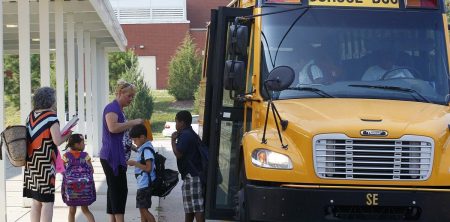Introduction
School safety is a critical concern for educational institutions, parents, administrators, and communities. In an increasingly complex world, developing a comprehensive approach to crisis management has become more important than ever. This article explores the multifaceted aspects of school safety, providing insights into effective planning, prevention, response, and recovery strategies.
The Evolving Landscape of School Safety
Historical Context
The landscape of school safety has dramatically transformed over the past few decades. From isolated incidents to more complex security challenges, educational institutions have been forced to adapt to an ever-changing threat environment. Understanding this evolution is crucial for developing robust safety protocols.
Key Milestones in School Safety
1990s: Initial emergence of school violence awareness
Early 2000s: Increased focus on bullying prevention
2010s: Rise of active shooter preparedness
2020s: Comprehensive approach integrating physical, digital, and emotional safety
Current Challenges
Modern schools face a wide range of safety challenges, including:
Physical security threats
Cyberbullying
Mental health concerns
Technological vulnerabilities
Natural disaster preparedness
Comprehensive Crisis Management Framework
Pillars of Effective School Safety
Prevention
Risk Assessment
Early Intervention
Mental Health Support
Community Engagement
Preparedness
Comprehensive Emergency Plans
Regular Training
Resource Allocation
Communication Protocols
Response
Immediate Action Procedures
Coordination with Local Authorities
Real-time Communication Systems
Trauma-Informed Approaches
Recovery
Psychological Support
Continuous Improvement
Community Healing
Long-term Resilience Building
Detailed Safety Strategies
Physical Security Measures
Infrastructure Considerations
Controlled Access Points
Surveillance Systems
Emergency Communication Technologies
Safe Room Designations
Secure Perimeter Management
Technology Integration
Advanced Monitoring Systems
Visitor Management Platforms
Anonymous Reporting Tools
Real-time Location Tracking
Integrated Communication Networks
Mental Health and Prevention
Proactive Intervention Strategies
Early Warning Systems
Comprehensive Counseling Services
Peer Support Programs
Social-Emotional Learning Curriculum
Bullying Prevention Initiatives
Psychological Assessment Frameworks
Regular Mental Health Screenings
Individualized Support Plans
Trauma-Informed Care Approaches
Resilience Building Programs
Family and Community Engagement
Emergency Response Protocols
Incident Classification
Low-Risk Incidents
Minor Disruptions
Non-Violent Conflicts
Medical Emergencies
Medium-Risk Incidents
Potential Threats
Escalating Conflicts
External Environmental Risks
High-Risk Incidents
Active Shooter Scenarios
Severe Threats
Large-Scale Emergencies
Response Coordination
Clear Chain of Command
Defined Roles and Responsibilities
Interagency Collaboration
Rapid Decision-Making Protocols
Continuous Communication Channels
Technology and Digital Safety
Cybersecurity Measures
Network Protection
Data Privacy Protocols
Digital Citizenship Education
Online Behavior Monitoring
Secure Communication Platforms
Digital Threat Management
Cyberbullying Detection
Social Media Monitoring
Online Threat Assessment
Digital Forensics Capabilities
Incident Response Mechanisms
Training and Preparedness
Staff Training Programs
Comprehensive Safety Workshops
Crisis Simulation Exercises
Psychological First Aid
Threat Assessment Techniques
Continuous Professional Development
Student Preparedness
Age-Appropriate Safety Education
Emergency Drill Participation
Emotional Intelligence Training
Conflict Resolution Skills
Reporting Mechanisms
Parent and Community Involvement
Transparent Communication
Safety Workshops
Community Partnerships
Collaborative Risk Assessment
Shared Responsibility Approach
Legal and Ethical Considerations
Compliance Requirements
Federal Safety Regulations
State-Specific Guidelines
Privacy Protection Laws
Non-Discrimination Policies
Ethical Implementation Frameworks
Rights and Responsibilities
Student Privacy
Balanced Security Approaches
Inclusive Safety Strategies
Transparent Reporting Mechanisms
Continuous Improvement Processes
Technological Innovations in School Safety
Emerging Technologies
Artificial Intelligence Threat Detection
Predictive Risk Assessment
Advanced Surveillance Systems
Biometric Access Control
Machine Learning Incident Prediction
Future Trends
Integrated Safety Ecosystems
Personalized Risk Management
Real-time Global Threat Monitoring
Adaptive Security Frameworks
Holistic Well-being Approaches
Psychological Resilience and Trauma Recovery
Post-Incident Support
Immediate Psychological Intervention
Long-Term Counseling Services
Community Healing Processes
Individualized Trauma Recovery
Resilience Building Strategies
Healing and Restoration
Comprehensive Support Networks
Therapeutic Interventions
Community Rebuilding Efforts
Emotional Support Mechanisms
Strength-Based Recovery Approaches
Conclusion
School safety is a dynamic, multifaceted challenge requiring continuous adaptation, comprehensive planning, and a holistic approach. By integrating physical security, mental health support, technological innovations, and community collaboration, educational institutions can create safer, more resilient learning environments.
The journey toward optimal school safety is ongoing, demanding commitment, innovation, and a shared responsibility among all stakeholders. As threats evolve, so must our strategies, always prioritizing the well-being, protection, and potential of our students.
Key Takeaways
Comprehensive approach is essential
Prevention is as crucial as response
Technology supports, but does not replace human judgment
Community involvement is critical
Continuous learning and adaptation are paramount
Recommendations for Implementation
Conduct comprehensive risk assessments
Develop flexible, adaptive safety plans
Invest in staff and student training
Leverage technology strategically
Prioritize mental health and prevention
Foster open communication
Regularly review and update protocols

